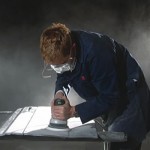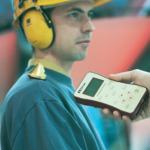Indoor Air Quality Dampness and Mould
Problems of indoor air quality are recognised as important risk factors for human health. Knowledge of indoor air quality, its health significance and the factors that cause poor quality are key to enabling action by building owners, users and occupants, to maintain clean indoor air.
Following significant rain events there may be significant ingress of moisture to buildings. Excess moisture on almost all indoor materials leads to growth of microbes, such as mould, fungi and bacteria, which subsequently emit spores, cells, fragments and volatile organic compounds into indoor air. Furthermore, dampness initiates chemical or biological degradation of materials, which also pollutes indoor air.
Indoor Air Quality Mould Health Effects
The most important health effects of mould exposure are increased prevalence of respiratory symptoms, allergies, asthma and immunological reactions. Exposure to mould and other dampness-related microbial agents increases the risks of rare conditions, such as hypersensitivity pneumonitis, allergic alveolitis, chronic rhinosinusitis and allergic fungal sinusitis.
While groups such as atopic and allergic people are particularly susceptible to biological and chemical agents in damp indoor environments, adverse health effects have also been found in non-atopic populations.
Health hazards result from a complex chain of events that link penetration of water indoors and excessive moisture to biological growth, physical and chemical degradation, and emission of hazardous biological and chemical agents.
The presence of many biological agents in the indoor environment is due to dampness and inadequate ventilation. Excess moisture on almost all indoor materials leads to growth of microbes, such as mould, fungi and bacteria, which subsequently emit spores, cells, fragments and volatile organic compounds into indoor air.
Dampness as an Indicator of Indoor Air Quality for Mould
Dampness is strong, consistent indicator of the risk of asthma and respiratory symptoms (e.g. cough and wheeze). The health risks of biological contaminants of indoor air can thus be addressed by considering dampness as the risk indicator. Assessment of parameters such as relative humidity and ventilation rates are effective indicators of a mould exposure risk.
Indicators of dampness and microbial growth include the presence of condensation on surfaces or in structures, visible mould, perceived mouldy odour and a history of water damage, leakage or penetration. Thorough inspection and appropriate measurements, if necessary, can be used to confirm indoor moisture and microbial growth. The most important means for avoiding adverse health effects is the prevention (or minimisation) of persistent dampness and microbial growth on interior surfaces and in building structures.
Assessment of Mould Indoor Air Quality
A visual inspection of the building can identify evidence of mould on building structures including carpet and floor areas.
High relative humidity, dampness and a strong musty smell are strong indicators of mould.
Monitoring for Carbon Monoxide, Carbon Dioxide, Oxygen, Air Temperature, Relative Humidity and Ventilation rates provides useful information for assessing indoor air quality. Monitoring for Particulates, Formaldehyde and Volatile Organic Compounds can also be useful in specific situations.
In some situation conducting air monitoring for mould could be considered. In most cases air monitoring for mould is not recommended. To get effective data from air monitoring for mould it is necessary to monitor over an extended period and collect a lot of samples. The World Health Organisation recommends a minimum of 27 samples to get statistically relevant data.
The Australian Government Guideline for Air conditioning and thermal comfort states ‘The consensus view of health authorities appears to be that the setting of quantitative standards for the microbiological contamination of air in office buildings is not particularly useful, and that measurement of the microbial content of the air in office workplaces is rarely helpful’.
Various commercial organisations (particularly those marketing testing and decontamination services) and others have proposed their own guideline values for the evaluation of microbial test results. The guidelines mostly lie in the 500 to 5000 CFU/M3 range, however they appear to have little basis other than undocumented claims of experience and should not be followed unless supported by sound scientific justification and approved by the relevant Health Authority.
Control of Indoor Air Quality Mould
Apart from its entry during occasional events (such as water leaks, heavy rain and flooding), most moisture enters a building in incoming air, including that infiltrating through the building envelope or that resulting from the occupants’ activities.
Well-designed, well-constructed, well-maintained building envelopes are critical to the prevention and control of excess moisture and microbial growth, as they prevent thermal bridges and the entry of liquid or vapour-phase water. Management of moisture requires proper control of temperatures and ventilation to avoid excess humidity, condensation on surfaces and excess moisture in materials. Ventilation should be distributed effectively throughout spaces, and stagnant air zones should be avoided.
Building owners are responsible for providing a healthy workplace environment free of excess moisture and mould, by ensuring proper building construction and maintenance. The occupants are responsible for managing the use of water, heating, ventilation and appliances in a manner that does not lead to dampness and mould growth.
For detailed advice on assessment and specific control measures for your workplace contact our consultants.
For further information on indoor air quality click here.
Haztek: Servicing Sunshine Coast, Brisbane, Gold Coast and Regional Queensland
Useful references
Air-Conditioning and thermal comfort in Australian Public Service offices, Comcare Australia 1995.
HVAC Systems and Equipment. ASHRAE Handbook ASHRAE Atlanta 2000.
World Health Organisation (WHO) Guidelines For Indoor Air Quality Dampness And Mould, 2009.












